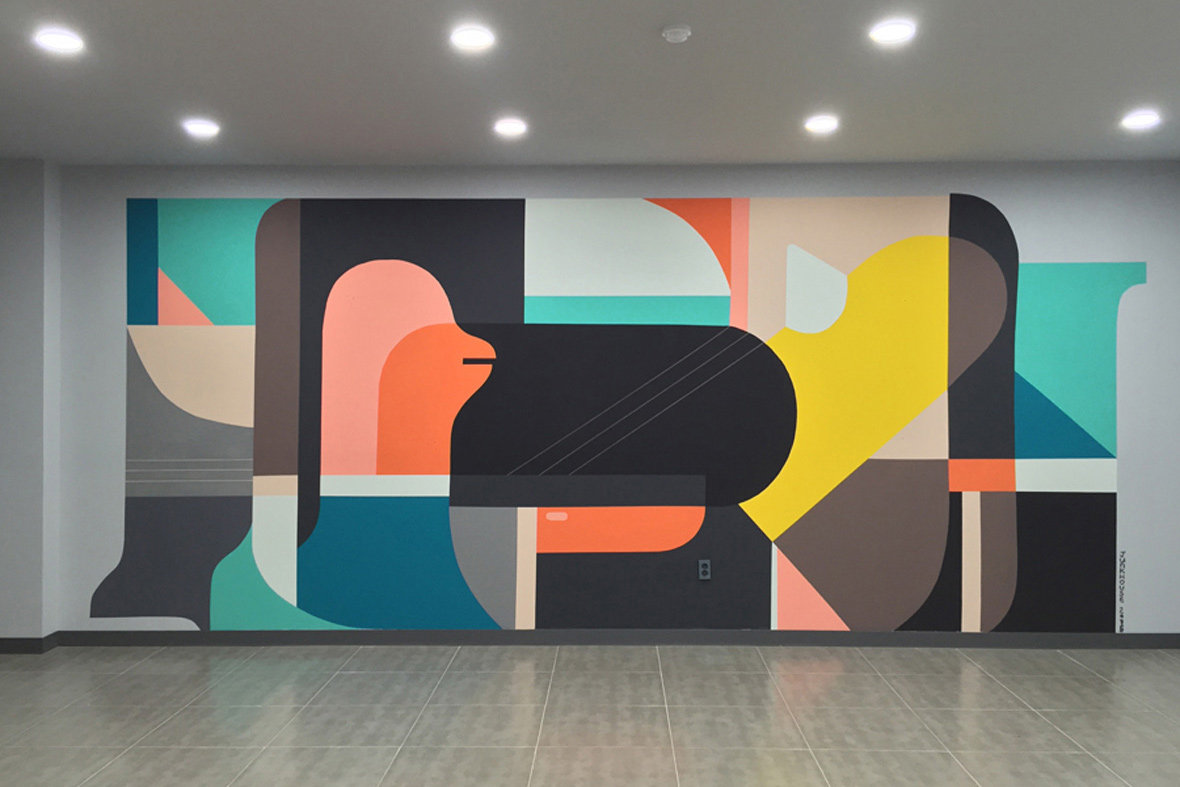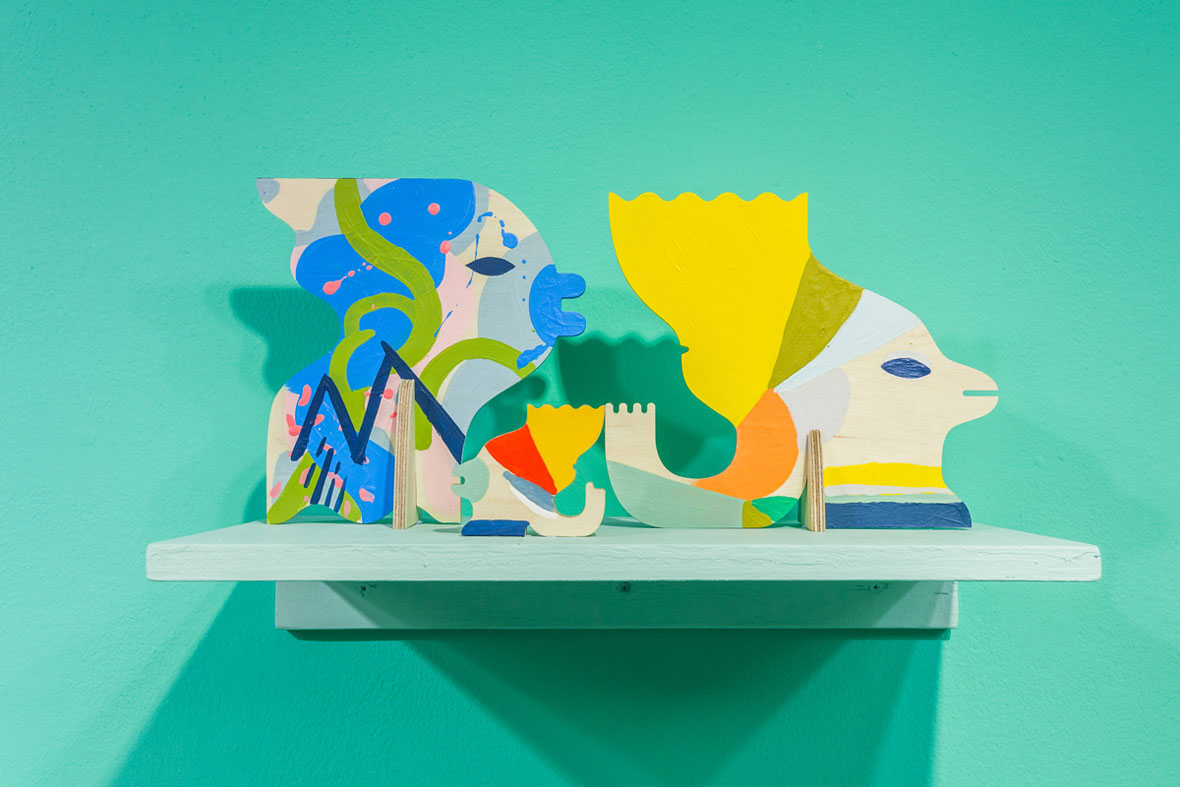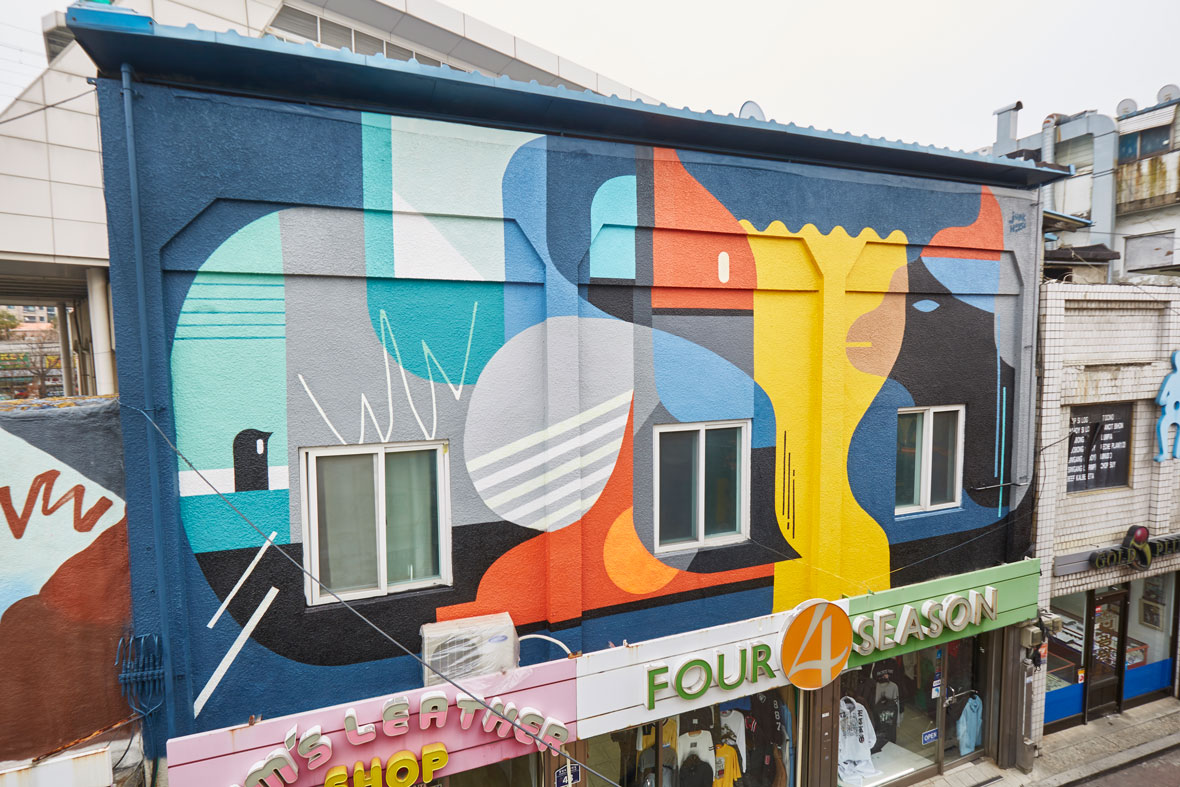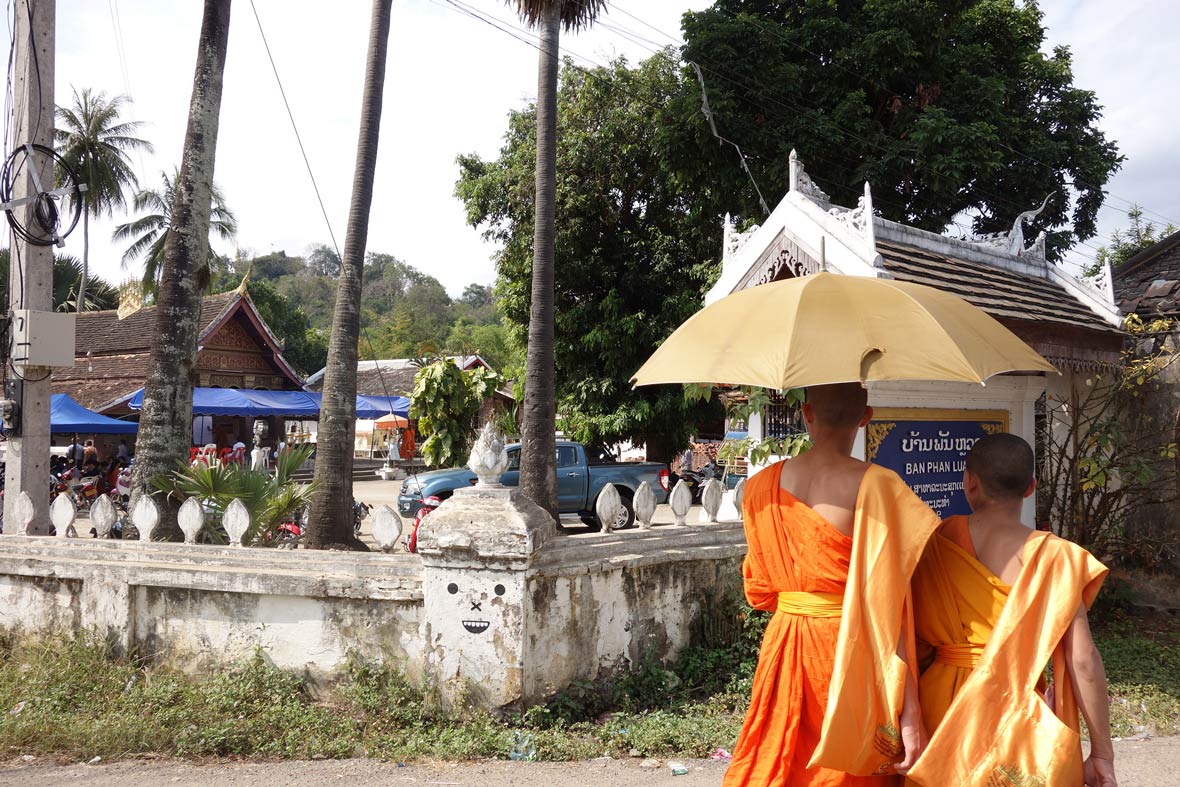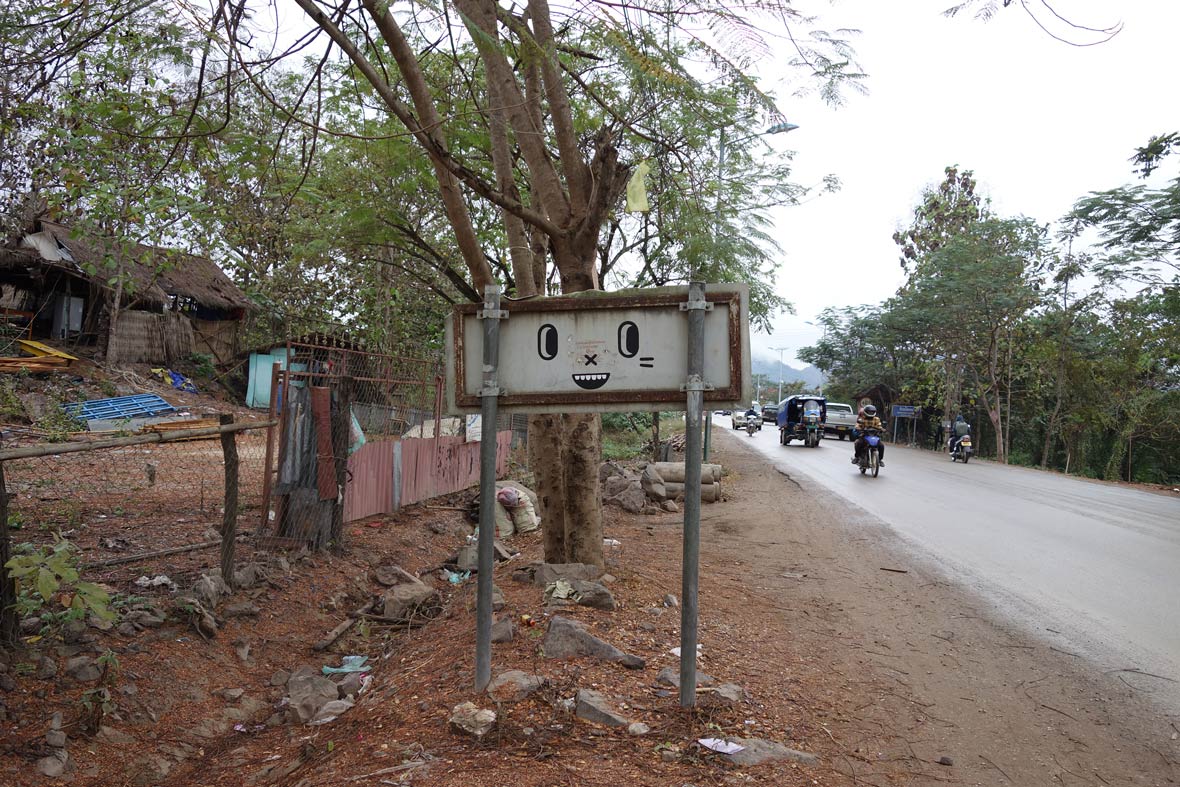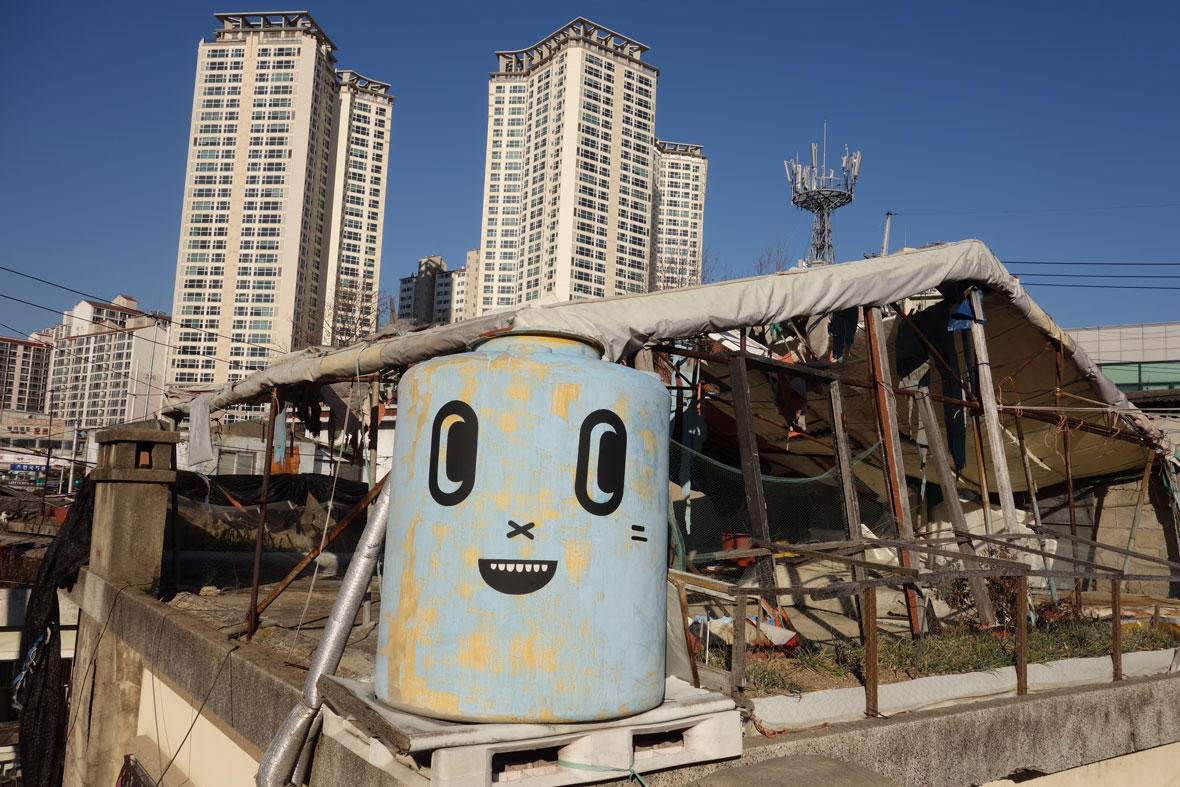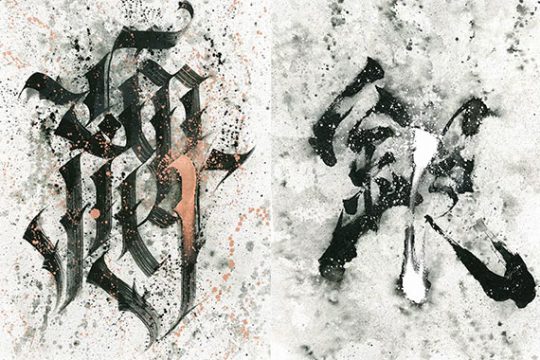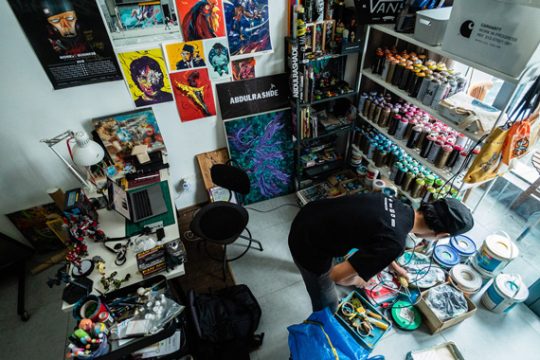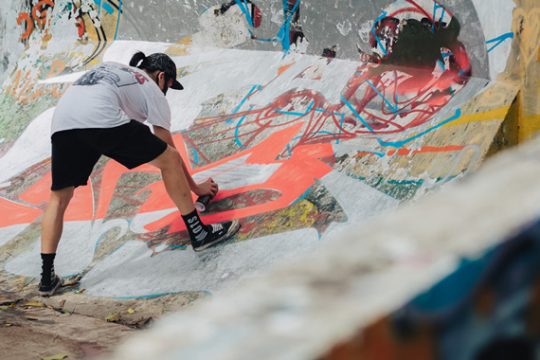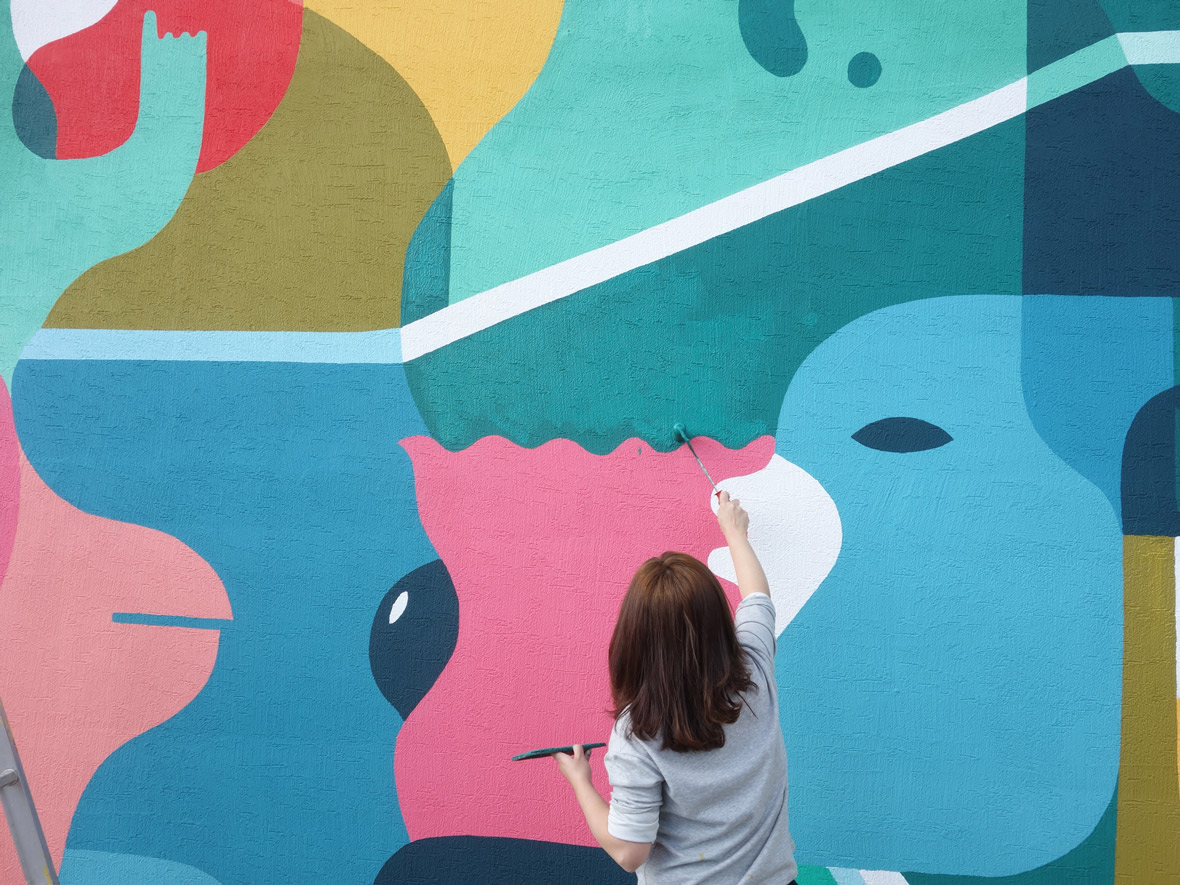
South Korean street artist Junkhouse believes that everything in existence is alive – and she literally means everything. From old buildings to street signs, she sees life in inanimate objects that people normally wouldn’t look twice at. Living in Seoul, she’s observed and experienced the city’s redevelopment over the last decade. In the city’s evolution, she’s come to see Seoul as one enormous organism, an ever-changing and evolving entity, one that has lent an undeniable influence on the direction of her own artistic style.
韩国街头艺术家Junkhouse认为,存在的一切都是有生命力的。从旧建筑到街道标志,她从人们过眼即忘的无生命物体中看到生命。生活在首尔的她见证并亲历了这座城市在过去十年中的重建。在她眼中,首尔是一个巨大的有机体,这座不断演变的城市,就是一个不断变化和进化的存在,这一点对她的艺术风格产生了不可磨灭的影响。
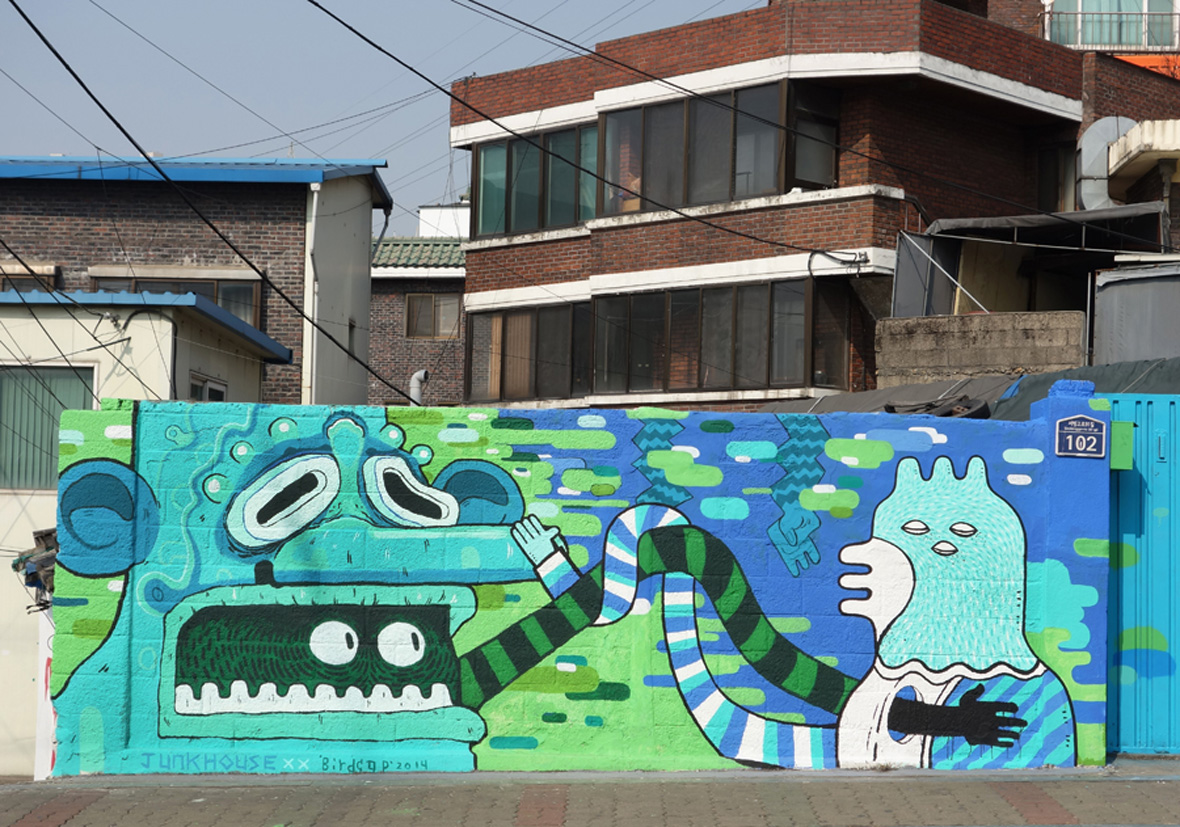
Junkhouse says the monsters and mutants who lurk in her work are reflective of the city’s never-ending metamorphosis. “They match the city’s continuously changing environment,” she explains, pausing. “I suppose that’s also why my work has become more abstract.” Whether on random street corners or in an art gallery, the signature aesthetic of Junkhouse’s artwork is unmistakable: bright colors and amorphous shapes, all of which swirl together and bring to life the strangely adorable creatures of her imagination.
Junkhouse说,潜藏在她作品中的怪物和异形代表了这座城市永无止境的演变。“他们反映了首尔不断变化的环境,”她解释道,沉默了一会儿,又补充道:“这可能也是我的作品越来越抽象的原因。”无论是在某个街角创作的作品,还是在艺术画廊举办的展览,Junkhouse的作品都具有一种独特的美学风格:明亮的色彩和奇特形状相结合,将她脑海中那些可爱、奇异的生物栩栩如生地呈现出来。
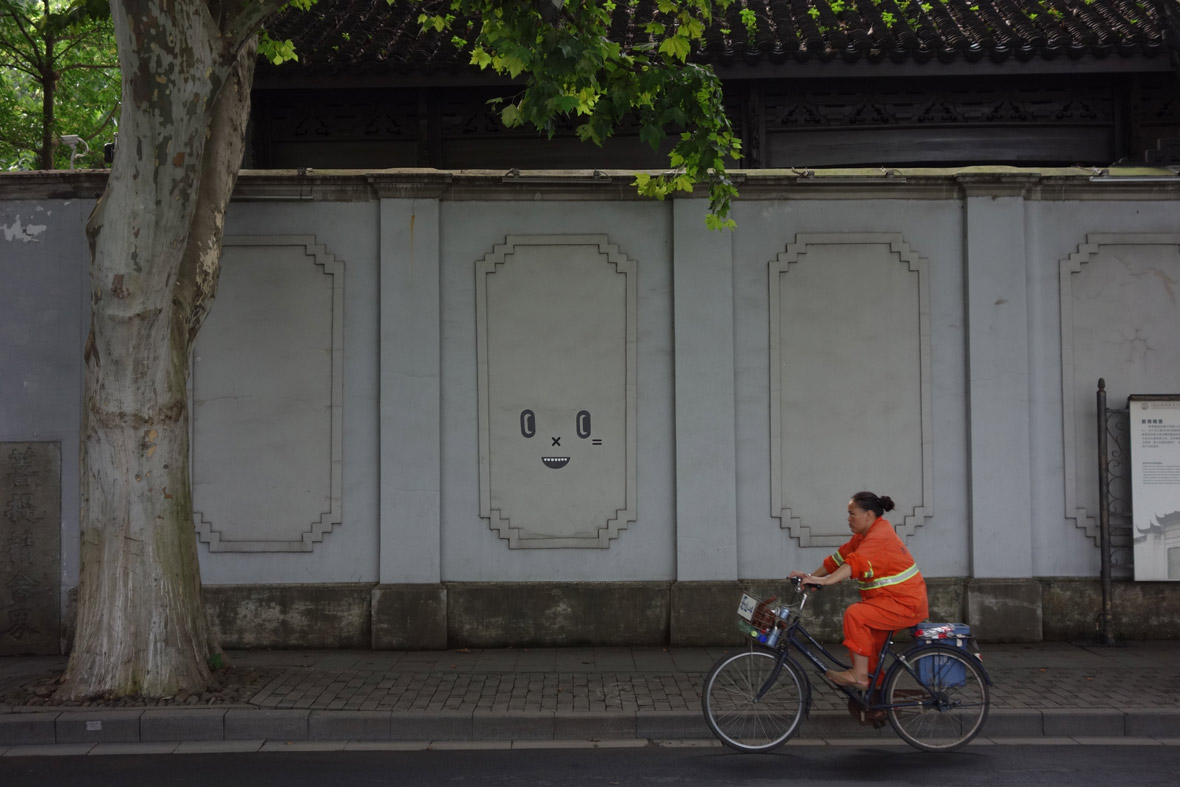
In her ongoing project City Life, Junkhouse transforms the seemingly insentient objects of cities – from drab walls to industrial machinery – into cheerful creatures. “I carry around stickers of eyes, noses, and mouths every time I visit a new city or a new neighborhood so that I can meet new creatures and give them life,” she says. “Everything differs in size and shape, so they take on a completely different entity even if I put the same eyes, nose, and mouth on them. If anyone meets any of my urban creatures on the streets, I hope they’ll recognize that were here this whole time.”
在她目前创作的项目《City Life》中,Junkhouse将城市里看似无生命的物体(从普通的墙壁到工业机械)改造成充满快乐气息的“生物”。她说:“每次我去到一个新的城市或新的社区,我都会随身携带眼睛、鼻子和嘴巴图案的贴纸,这样,我就能够在发现到新的‘生物’时通过创作,给予它们生命。它们的尺寸和形状都不尽相同,所以即使我给它们放上相同的眼睛、鼻子和嘴巴,它们也是完全不一样的。如果有人在街上遇到我在城市里创作的‘生物’,希望他们能够认识到,这些‘生物’其实一直都在那里。”
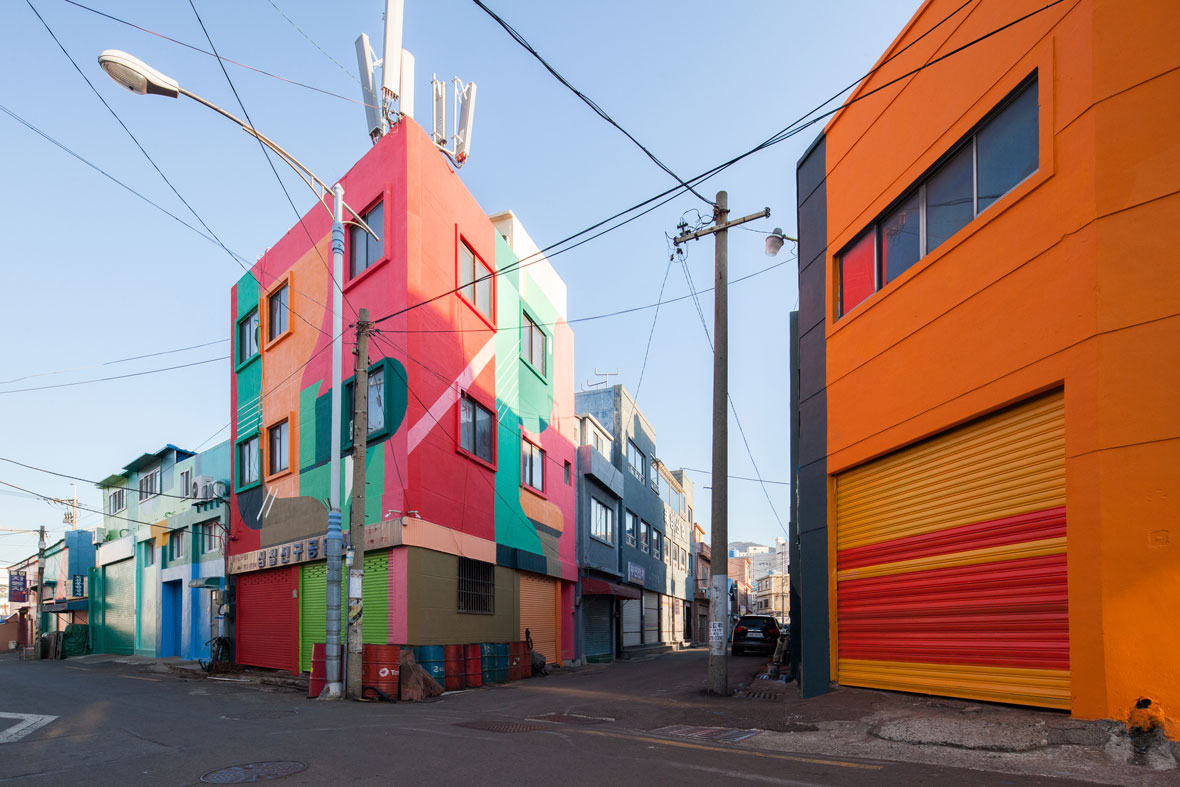
“There isn’t as much street art or as many street artists as you’d think in Seoul or Korea,” she says, dejectedly. “Seoul is actually a difficult place for street art due to the characteristics of the buildings, and since this art can’t be seen, it’s not easy for people to experience. Even though various subcultures have evolved over time and there are more artists now, the growth is slow and it’s hard for their work to reach more people.” This is part of the reason that Junkhouse prefers the streets over gallery spaces, despite the numerous successful exhibitions she’s held over the years. With each trash can, derelict building, or crumbling wall that she brings to life, she’s making art that much more accessible and approachable for everyday people. “Sure, it may be comfortable inside a gallery, but there’s a lot of stress when creating for an exhibition. On the streets, the weather may be unpredictable and it may be uncomfortable, but I feel a lot more relaxed. More importantly, if your work is in the streets then more people will get to see it.”
然后,她有点沮丧地说:“在首尔,或者说在整个韩国,其实街头艺术家并没有你想像的那么多。由于这里建筑的特点,在首尔创作街头艺术并不容易,而由于这种艺术的不常见,人们很少有机会体验这种艺术。虽然,各种亚文化在逐渐发展,现在也出现了更多的艺术家,但发展的速度很慢,很难让他们的作品接触到更多的人。” 这也是Junkhouse更喜欢在街头创作艺术,而不是在画廊办展的原因之一,尽管她多年来已经举办的许多展览都很成功。她通过自己的创作,让垃圾桶、废弃的建筑物或那些摇摇欲坠的墙壁焕现生命力,让大众有更多机会来接触这种艺术。“虽然在画廊里很舒服,但是要创作一整个展览时压力会很大。而在街上,天气可能变幻莫测,环境也不如画廊舒服,但我觉得很放松。更重要的是,与画廊相比,在街头创作能让更多的人看到你的作品。”
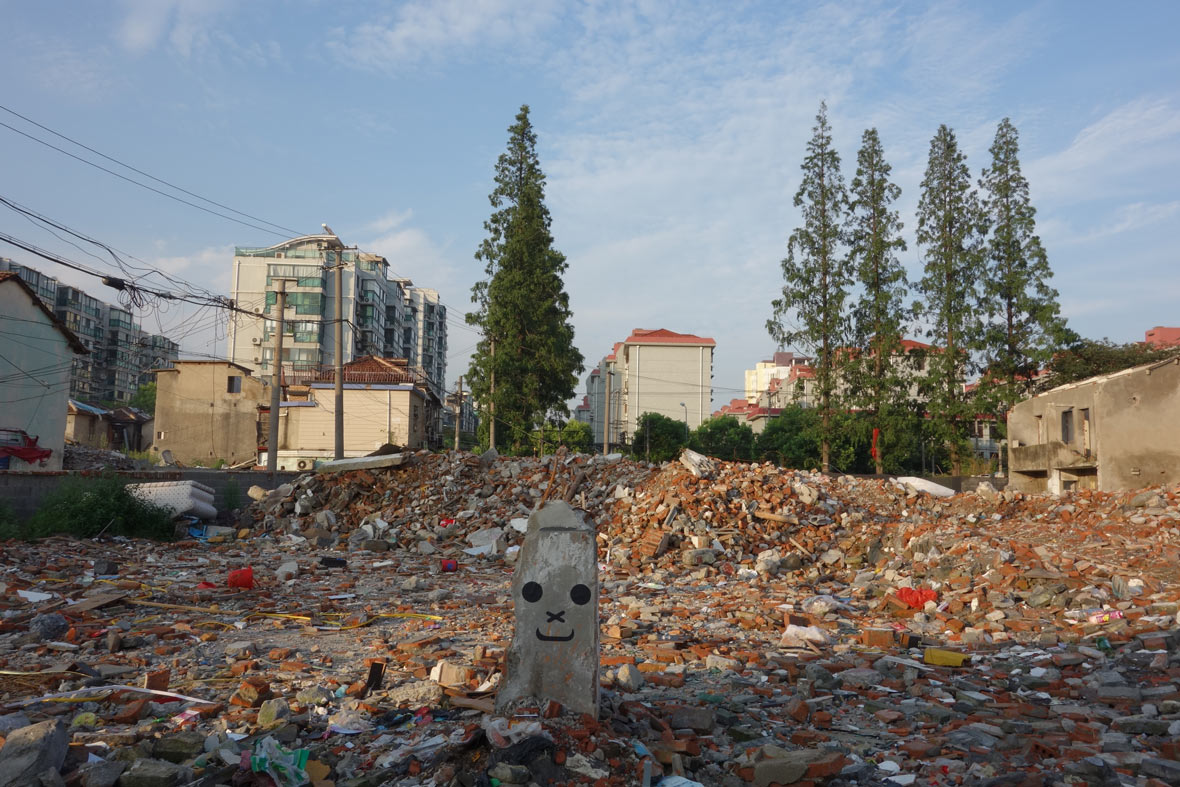
Website: junkhouse.net
Facebook: ~/junkhouse.sue
Instagram: @junkhouse_
Contributor: David Yen
Images Courtesy of Junkhouse

